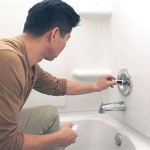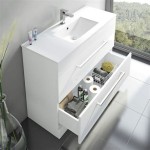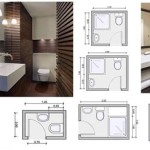How to Fix Loose Bathroom Floor Tile
A loose bathroom floor tile can be a frustrating problem. It's a tripping hazard, unsightly, and can even signal a more significant underlying issue. But before you panic, know that fixing loose bathroom floor tiles is often a manageable DIY project. This article will guide you through the steps involved, equipping you with the knowledge and confidence to tackle the problem head-on.
1. Determine the Cause of the Loose Tile
Before proceeding with any repairs, it's crucial to understand why the tile is loose. This will help you select the appropriate repair method and address the problem at its root. Here are some common causes:
- Thinset Mortar Failure: The thinset mortar, the adhesive used to bond the tile to the subfloor, might have dried out or cracked, leading to a weak bond. This is often the case in older installations or if the initial installation process was inadequate.
- Subfloor Movement: In some cases, the subfloor itself might be moving, causing the tile to detach. This can occur due to variations in moisture levels, structural issues, or poor subfloor construction.
- Improper Grout Application: The grout, the material that fills the gaps between tiles, should be applied properly to create a strong and waterproof seal. If the grout hasn't been applied correctly, it might be causing the tile to become loose.
- Water Damage: Water damage, particularly from leaks or spills, can weaken the adhesive bond and contribute to tile loosening.
By carefully examining the loose tile and surrounding area, you can often identify the root cause. This might involve tapping the tile gently and observing its movement, checking for cracks in the mortar, and looking for any evidence of water damage.
2. Gather the Necessary Tools and Materials
Once you have identified the cause of the loose tile, you can start assembling the necessary tools and materials. The specific items will vary depending on the repair method, but you'll likely need:
- A hammer: For tapping the tile and removing the grout.
- A chisel: For removing the grout.
- A utility knife: For scraping away any excess grout.
- A putty knife: For applying the thinset mortar.
- A bucket: For mixing the thinset mortar.
- A sponge: For cleaning up excess mortar.
- Thinset Mortar: Choose a quality, moisture-resistant mortar, ensuring it’s suitable for bathroom applications.
- Grout: Select a color that complements the tiles and matches the original grout, if applicable.
- Safety glasses: To protect your eyes from debris.
- Gloves: To protect your hands from mortar and grout.
3. Repairing the Loose Tile
The specific repair method will depend on the cause of the loose tile. Here are two common approaches:
3.1. Fixing a Loose Tile Due to Thinset Mortar Failure
If the thinset mortar has failed, you can re-secure the tile using the following steps:
- Remove the grout: Carefully remove the grout surrounding the loose tile using a chisel and hammer. Be sure to work slowly and avoid damaging the surrounding tiles.
- Remove the tile: Gently tap the tile with a hammer and chisel to loosen it. Once it's loose, carefully lift it off the subfloor.
- Clean the area: Thoroughly clean the subfloor and the back of the tile to remove any debris or old mortar. This will ensure a strong bond.
- Apply thinset mortar: Mix the thinset mortar according to the manufacturer's instructions. Apply a thin layer of mortar to the subfloor, ensuring it covers the entire area where the tile will be placed.
- Reinstall the tile: Carefully place the tile back in its original position, pressing it firmly into the mortar. Use a level to ensure it's positioned correctly.
- Apply grout: Once the mortar has dried, carefully apply grout to the gaps between the tiles. Ensure it's fully packed into the spaces.
- Clean the grout: Allow the grout to dry slightly, then clean the excess grout using a damp sponge. Be sure to remove any excess before it hardens.
3.2. Addressing Subfloor Movement
If subfloor movement is causing the loose tile, you'll need to address the underlying issue. This might involve:
- Replacing the subfloor: If the subfloor is severely damaged or warped, you'll need to replace it entirely. This is a more extensive project that requires specialized skills.
- Adding support beams: If the subfloor is sagging, adding support beams can help stabilize it. This involves reinforcing the subfloor structure and can be a complex project.
- Moisture control: If the subfloor is affected by moisture, addressing the source of the moisture is essential. This might involve fixing leaks, improving ventilation, or using a moisture barrier beneath the subfloor.
Before attempting any of these solutions, it's best to consult with a professional contractor who can assess the severity of the problem and provide appropriate recommendations.

How To Fix Loose Hollow Tile Floors Don T Remove Or Replace Just Drill Fill
.png?strip=all)
How To Fix Loose Or Broken Ceramic Floor Tiles

How To Fix Loose Floor Tiles Alliance Flooring Directory

How To Fix A Loose Tile In The Bathroom

Floor Tiles Repairing Tubes Kits Syringes Fix A

How To Fix Loose Floor Tiles Beginner Friendly Guide

Fixing Loose Floor Tiles And Why They In New Builds

Tile Repair Loose Tiles Part 1 How To Identify And The Proper Way Remove Them

What Causes Drummy Tiles And How To Fix Them Fantastic Services

Tile Repair Loose Tiles Part 1 How To Identify And The Proper Way Remove Them
Related Posts







